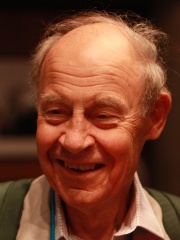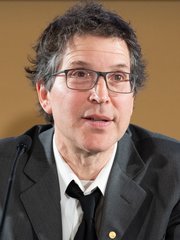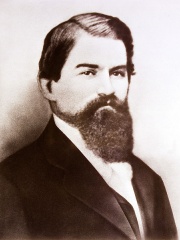


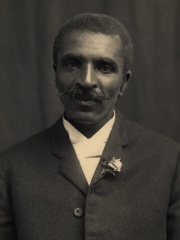
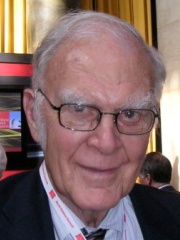
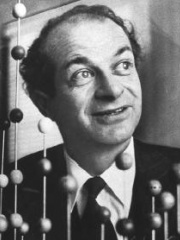
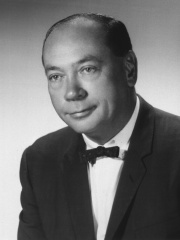

The Most Famous
CHEMISTS from United States
This page contains a list of the greatest American Chemists. The pantheon dataset contains 602 Chemists, 128 of which were born in United States. This makes United States the birth place of the most number of Chemists.
Top 10
The following people are considered by Pantheon to be the top 10 most legendary American Chemists of all time. This list of famous American Chemists is sorted by HPI (Historical Popularity Index), a metric that aggregates information on a biography's online popularity. Visit the rankings page to view the entire list of American Chemists.

1. John Stith Pemberton (1831 - 1888)
With an HPI of 80.50, John Stith Pemberton is the most famous American Chemist. His biography has been translated into 53 different languages on wikipedia.
John Stith Pemberton (July 8, 1831 – August 16, 1888) was an American pharmacist, chemist, and Confederate States Army officer who is best known as the inventor of Coca-Cola. On May 8, 1886, he developed an early version of a beverage that would later become Coca-Cola, but sold the rights to the drink shortly before his death in 1888. Pemberton suffered from a sabre wound sustained in April 1865, during the Battle of Columbus. His efforts to control his chronic pain led to morphine addiction. In an attempt to curb his addiction he began to experiment with various painkillers and toxins. The development of an earlier beverage blending alcohol and cocaine led to the recipe that later was adapted to make Coca-Cola.

2. Edwin McMillan (1907 - 1991)
With an HPI of 80.49, Edwin McMillan is the 2nd most famous American Chemist. His biography has been translated into 62 different languages.
Edwin Mattison McMillan (September 18, 1907 – September 7, 1991) was an American physicist credited with being the first to produce a transuranium element, neptunium. For this, he shared the 1951 Nobel Prize in Chemistry with Glenn Seaborg. A graduate of California Institute of Technology, he earned his doctorate from Princeton University in 1933, and joined the Berkeley Radiation Laboratory where he discovered oxygen-15 and beryllium-10. During World War II, he worked on microwave radar at the MIT Radiation Laboratory, and then on sonar at the Navy Radio and Sound Laboratory. In 1942 he joined the Manhattan Project, the wartime effort to create atomic bombs, and helped establish its Los Alamos Laboratory where the bombs were designed. He led teams working on the gun-type nuclear weapon design, and also participated in the development of the implosion-type nuclear weapon. McMillan co-invented the synchrotron with Vladimir Veksler, and after the war he returned to the Berkeley Radiation Laboratory to build them. He was appointed associate director of the Radiation Laboratory in 1954 and promoted to deputy director in 1958. He became director upon the death of lab founder Ernest Lawrence later that year, and remained director until his retirement in 1973.

3. Raymond Davis Jr. (1914 - 2006)
With an HPI of 80.12, Raymond Davis Jr. is the 3rd most famous American Chemist. His biography has been translated into 63 different languages.
Raymond Davis Jr. (October 14, 1914 – May 31, 2006) was an American chemist and physicist. He is best known as the leader of the Homestake experiment in the 1960s-1980s, which was the first experiment to detect neutrinos emitted from the Sun; for this he shared the 2002 Nobel Prize in Physics.

4. George Washington Carver (1864 - 1943)
With an HPI of 78.70, George Washington Carver is the 4th most famous American Chemist. His biography has been translated into 53 different languages.
George Washington Carver (c. 1864 – January 5, 1943) was an American agricultural scientist and inventor who promoted alternative crops to cotton and methods to prevent soil depletion. He was one of the most prominent black scientists of the early 20th century. While a professor at Tuskegee Institute, Carver developed techniques to improve types of soils depleted by repeated plantings of cotton. He wanted poor farmers to grow other crops, such as peanuts and sweet potatoes, as a source of their own food and to improve their quality of life. Under his leadership, the Experiment Station at Tuskegee published over forty practical bulletins for farmers, many written by him, which included recipes; many of the bulletins contained advice for poor farmers, including combating soil depletion with limited financial means, producing bigger crops, and preserving food. Apart from his work to improve the lives of farmers, Carver was also a leader in promoting environmentalism. He received numerous honors for his work, including the Spingarn Medal of the NAACP. In an era of high racial polarization, his fame reached beyond the black community. He was widely recognized and praised in the white community for his many achievements and talents. In 1941, Time magazine dubbed Carver a "Black Leonardo".

5. John Fenn (1917 - 2010)
With an HPI of 78.47, John Fenn is the 5th most famous American Chemist. His biography has been translated into 58 different languages.
John Bennett Fenn (June 15, 1917 – December 10, 2010) was an American professor of analytical chemistry who was awarded a share of the Nobel Prize in Chemistry in 2002. He shared half of the award with Koichi Tanaka for their work in mass spectrometry. The other half went to Kurt Wüthrich. Fenn's contributions specifically related to the development of electrospray ionization, now a commonly used technique for large molecules and routine liquid chromatography-tandem mass spectrometry. Early in his career, he studied the field of jet propulsion at Project SQUID and focused on molecular beams. He finished his career with more than 100 publications, including one book. Fenn was born in New York City, and moved to Kentucky with his family during the Great Depression. Fenn did his undergraduate work at Berea College, and received his PhD from Yale. He worked in industry at Monsanto and at private research labs before moving to academic posts including Yale and Virginia Commonwealth University. Fenn's research into electrospray ionization found him at the center of a legal dispute with Yale University. He lost the lawsuit, after it was determined that he misled the university about the potential usefulness of the technology. Yale was awarded $500,000 in legal fees and $545,000 in damages. The decision pleased the university, but provoked mixed responses from some people affiliated with the institution, who were disappointed with the treatment of a Nobel Prize winner with such a long history at the school.

6. F. Sherwood Rowland (1927 - 2012)
With an HPI of 77.30, F. Sherwood Rowland is the 6th most famous American Chemist. His biography has been translated into 57 different languages.
Frank Sherwood "Sherry" Rowland (June 28, 1927 – March 10, 2012) was an American Nobel laureate and a professor of chemistry at the University of California, Irvine. His research was on atmospheric chemistry and chemical kinetics. His best-known work was the discovery that chlorofluorocarbons contribute to ozone depletion.

7. Linus Pauling (1901 - 1994)
With an HPI of 77.19, Linus Pauling is the 7th most famous American Chemist. His biography has been translated into 98 different languages.
Linus Carl Pauling ( PAW-ling; February 28, 1901 – August 19, 1994) was an American chemist and peace activist. He published more than 1,200 papers and books, of which about 850 dealt with scientific topics. New Scientist called him one of the 20 greatest scientists of all time. For his scientific work, Pauling was awarded the Nobel Prize in Chemistry in 1954. For his peace activism, he was awarded the Nobel Peace Prize in 1962. He is one of five people to have won more than one Nobel Prize. Of these, he is the only person to have been awarded two unshared Nobel Prizes, and one of two people to be awarded Nobel Prizes in different fields, the other being Marie Skłodowska-Curie. Pauling was one of the founders of the fields of quantum chemistry and molecular biology. His contributions to the theory of the chemical bond include the concept of orbital hybridisation and the first accurate scale of electronegativities of the elements. Pauling also worked on the structures of biological molecules, and showed the importance of the alpha helix and beta sheet in protein secondary structure. Pauling's approach combined methods and results from X-ray crystallography, molecular model building, and quantum chemistry. His discoveries inspired the work of Rosalind Franklin, James Watson, Francis Crick, and Maurice Wilkins on the structure of DNA, which in turn made it possible for geneticists to crack the DNA code of all organisms. In his later years, he promoted nuclear disarmament, as well as orthomolecular medicine, megavitamin therapy, and dietary supplements, especially ascorbic acid (commonly known as Vitamin C). None of his ideas concerning the medical usefulness of large doses of vitamins have gained much acceptance in the mainstream scientific community. He was married to the American human rights activist Ava Helen Pauling.

8. Earl Wilbur Sutherland Jr. (1915 - 1974)
With an HPI of 75.65, Earl Wilbur Sutherland Jr. is the 8th most famous American Chemist. His biography has been translated into 48 different languages.
Earl Wilbur Sutherland Jr. (November 19, 1915 – March 9, 1974) was an American pharmacologist and biochemist born in Burlingame, Kansas. Sutherland won a Nobel Prize in Physiology or Medicine in 1971 "for his discoveries concerning the mechanisms of the action of hormones", especially epinephrine, via second messengers, namely cyclic adenosine monophosphate, or cyclic AMP.

9. John Howard Northrop (1891 - 1987)
With an HPI of 75.49, John Howard Northrop is the 9th most famous American Chemist. His biography has been translated into 69 different languages.
John Howard Northrop (July 5, 1891 – May 27, 1987) was an American biochemist who, with James Batcheller Sumner and Wendell Meredith Stanley, won the 1946 Nobel Prize in Chemistry. The award was given for these scientists' isolation, crystallization, and study of enzymes, proteins, and viruses. Northrop was a Professor of Bacteriology and Medical Physics, Emeritus, at University of California, Berkeley.

10. Wendell Meredith Stanley (1904 - 1971)
With an HPI of 75.30, Wendell Meredith Stanley is the 10th most famous American Chemist. His biography has been translated into 61 different languages.
Wendell Meredith Stanley (August 16, 1904 – June 15, 1971) was an American biochemist, virologist and Nobel laureate. Stanley's work contributed to lepracidal compounds, diphenyl stereochemistry, and the chemistry of the sterols. His research on the virus causing the mosaic disease in tobacco plants led to the isolation of a nucleoprotein which displayed tobacco mosaic virus activity.
People
Pantheon has 128 people classified as American chemists born between 1779 and 1972. Of these 128, 33 (25.78%) of them are still alive today. The most famous living American chemists include William E. Moerner, Roger D. Kornberg, and Alan J. Heeger. The most famous deceased American chemists include John Stith Pemberton, Edwin McMillan, and Raymond Davis Jr.. As of April 2024, 4 new American chemists have been added to Pantheon including David Baker, John M. Jumper, and John Moolenaar.
Living American Chemists
Go to all RankingsWilliam E. Moerner
1953 - Present
HPI: 72.38
Roger D. Kornberg
1947 - Present
HPI: 71.86
Alan J. Heeger
1936 - Present
HPI: 70.82
Richard R. Schrock
1945 - Present
HPI: 70.33
Paul L. Modrich
1946 - Present
HPI: 69.97
Karl Barry Sharpless
1941 - Present
HPI: 69.46
Walter Gilbert
1932 - Present
HPI: 68.02
Carolyn R. Bertozzi
1966 - Present
HPI: 67.54
Dudley R. Herschbach
1932 - Present
HPI: 67.23
Elias James Corey
1928 - Present
HPI: 66.90
Joseph L. Goldstein
1940 - Present
HPI: 66.75
Thomas Cech
1947 - Present
HPI: 65.64
Deceased American Chemists
Go to all RankingsJohn Stith Pemberton
1831 - 1888
HPI: 80.50
Edwin McMillan
1907 - 1991
HPI: 80.49
Raymond Davis Jr.
1914 - 2006
HPI: 80.12
George Washington Carver
1864 - 1943
HPI: 78.70
John Fenn
1917 - 2010
HPI: 78.47
F. Sherwood Rowland
1927 - 2012
HPI: 77.30
Linus Pauling
1901 - 1994
HPI: 77.19
Earl Wilbur Sutherland Jr.
1915 - 1974
HPI: 75.65
John Howard Northrop
1891 - 1987
HPI: 75.49
Wendell Meredith Stanley
1904 - 1971
HPI: 75.30
Gertrude B. Elion
1918 - 1999
HPI: 75.10
Robert S. Mulliken
1896 - 1986
HPI: 74.46
Newly Added American Chemists (2025)
Go to all RankingsDavid Baker
1962 - Present
HPI: 57.57
John M. Jumper
HPI: 45.74
John Moolenaar
1961 - Present
HPI: 39.88
Clarice Phelps
HPI: 28.90
Overlapping Lives
Which Chemists were alive at the same time? This visualization shows the lifespans of the 25 most globally memorable Chemists since 1700.









